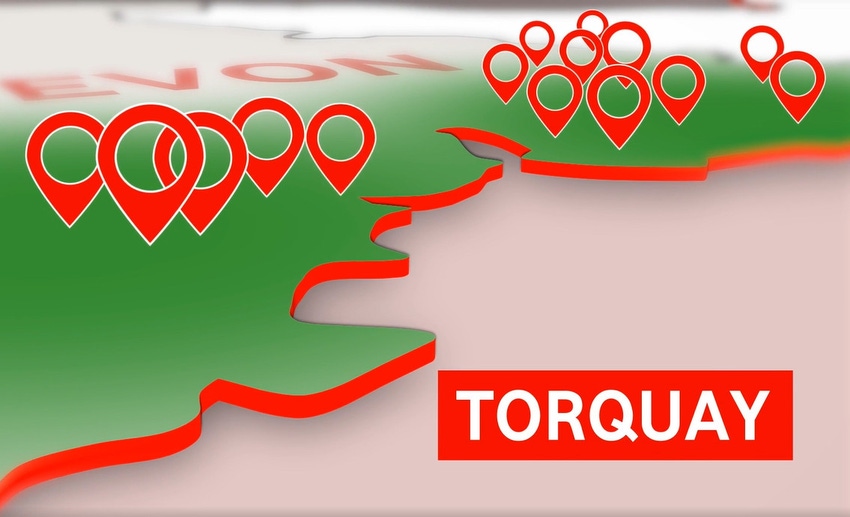OpenRAN is critical to the way we operate to ensure we can innovate as a scale we would not be able to otherwise.
December 6, 2022

Telecoms.com periodically invites expert third parties to share their views on the industry’s most pressing issues. In this piece Andrea Donà Network and Development Director at Vodafone UK, shares the thinking behind the company’s latest Open RAN initiative.
There are certainly plenty of myths in the industry about OpenRAN, and today I hope to eradicate one of them: OpenRAN will be deployed anywhere and everywhere, including the busy city centres.
Today, we have announced the deployment of the “Golden Cluster” in Torquay and Exmouth. This is an exciting development for both Vodafone and the wider industry as it demonstrates something very important: OpenRAN is not a niche technology for rural deployment; it has developed to a point where we can confidently deploy it in more complex environments. In this case, it is powering the connectivity needs of all residents and businesses in the Torquay and Exmouth area.
Before we get to the latest development in our OpenRAN journey, it’s perhaps worth recapping how we got here.
In 2016, we began our engagement with the ORAN Alliance and the Telecom Infra Project (TIP) to scope out the potential of OpenRAN. We wanted to get in on the ground floor because of the potential of this technology to redefine the telecoms industry. From there, we began pilots across the Vodafone Group, including the first deployment of 4G OpenRAN at the Royal Welsh Showground in 2020.
After more positive work, including designing our own single frequency OpenRAN radio unit, we announced OpenRAN would be at the forefront of our programme to remove High Risk Vendors from our network. This commitment included the deployment on at least 2,500 rural sites across the South West of the UK. We then opened R&D centres in both Newbury and Malaga to focus on OpenRAN in 2021, and in January this year, we switched on the first 5G OpenRAN site in Bath.
There have been many other milestones along the way, but they have all been building to this latest phase: the deployment of OpenRAN in an urban setting.
It might not sound like a watershed moment for the OpenRAN ecosystem, but it certainly is. We have deployed what some would consider to be an immature technology in a complex environment, powering the connectivity needs of all consumer and business customers in the area. Just to give you an idea of scale, there are roughly 180,000 people living in Exmouth and Torquay, all connected by OpenRAN.
This means OpenRAN is no longer a niche technology, resigned for rural deployments alone. It is a fundamental building block of our entire network, capable of being deployed in more complex environments. A genuine alternative to traditional RAN architecture everywhere and anywhere.
There is still a lot of work to be done before we can deploy OpenRAN in every city. We will continue to focus on refining the existing technology and working with new partners to bring in functionality and features in a more agile way that was not possible before.
This is what is critically important about OpenRAN. Yes, it has the potential to lower capital and operational expenditure thanks to the catalyst of increased competition, but it is also a technology ecosystem that can act as a vehicle to innovation. By introducing baked-in interoperability, we can start to explore ways we can work with specialist suppliers to nurture innovation.
We use a theoretical example internally. If a university professor writes an algorithm that improves the efficiency of spectrum frequencies by 5%, that would have untold benefits for the whole telecoms industry. However, working with traditional RAN architecture, it would be difficult to integrate that software as it would not necessarily be compatible with traditional supplier systems and hardware. With the baked-in interoperability of OpenRAN, it becomes a much simpler process, as this university professor has industry-approved specifications to work to.
This is a simple example, but it demonstrates the platform that OpenRAN offers to innovate above and beyond the basic requirement of reducing capital and operational expenditure on existing network operations. It moves the dial of OpenRAN, from making what we have more affordable, to building a network which functions better and greater flexibility, powering big ideas and allowing us to work with those who take a different view on challenges.
OpenRAN is critical to the way we operate to ensure we can innovate as a scale we would not be able to otherwise. And by moving OpenRAN into more complex urban environments, we can accelerate the progress of this exciting ecosystem even faster.
 Andrea was appointed as Network and Development Director, Vodafone UK, in April 2021. This was part of a Group-wide restructuring that saw the creation of one European Digital & IT team and one integrated European network. Andrea joined Vodafone UK as the Head of Networks in March 2019 and has since managed the roll-out of Vodafone UK’s 5G and fibre networks, the company’s converged network strategy, as well as the delivery of the company’s network transformation, rationalisation and digital agenda. Prior to this, he held a number of senior technology positions, such as Head of Network and Managed Services at Ericsson, and Network Deployment Director at T-Mobile.
Andrea was appointed as Network and Development Director, Vodafone UK, in April 2021. This was part of a Group-wide restructuring that saw the creation of one European Digital & IT team and one integrated European network. Andrea joined Vodafone UK as the Head of Networks in March 2019 and has since managed the roll-out of Vodafone UK’s 5G and fibre networks, the company’s converged network strategy, as well as the delivery of the company’s network transformation, rationalisation and digital agenda. Prior to this, he held a number of senior technology positions, such as Head of Network and Managed Services at Ericsson, and Network Deployment Director at T-Mobile.
Read more about:
DiscussionAbout the Author(s)
You May Also Like








.png?width=300&auto=webp&quality=80&disable=upscale)


_1.jpg?width=300&auto=webp&quality=80&disable=upscale)


.png?width=800&auto=webp&quality=80&disable=upscale)